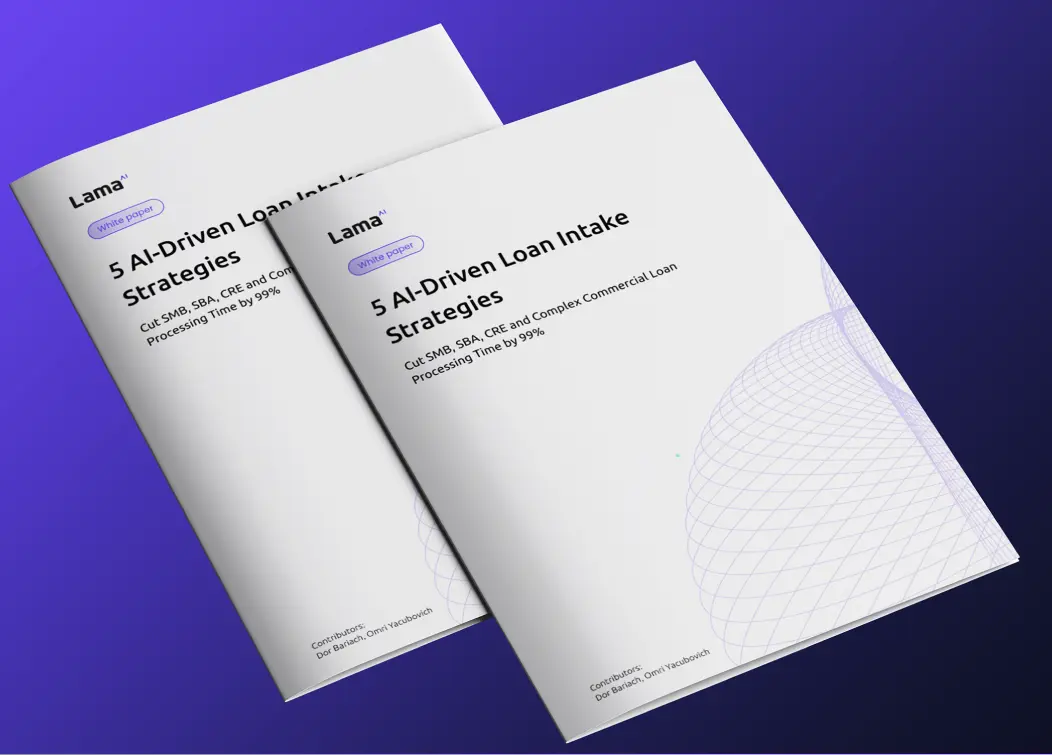How to Collaborate With Your Competitors

Introduction
Without any financial education, tools, or help from a bank, a young business owner took a bold decision and sold his business. Fast-forward 30 years: The same young entrepreneur is now an executive at a bank and responsible for promoting fintech partnerships and making services more accessible to small and midsize businesses.
We enjoyed hearing about Robert’s lessons learned, why he thinks competition and collaboration can and should coexist, and some overlooked opportunities in the field.
“Collaboration doesn’t necessarily mean all of a sudden we’re swimming in the same lane; we’re just able to navigate the pool better because we share best practices and insights.”

Interview
Omri Yacubovich: When you moved to the United States, you left your banking career and successfully built your own business. Do you think that affected your approach to banking down the road?
Robert Keil: Yes, it has. Banks, in general, do not run like businesses. Unlike banks, if you want to have a successful business, you need to have a clearly defined product offering, know who your ideal customers are, and understand how you find them and keep the sales flow going.
After I sold my business, I returned to my banking career and joined Wells Fargo (when it was still a great customer-focused bank). The CEO of the bank at that time, Richard Kovacevich, took a different approach to banking. He saw branches as stores. He clearly understood that there was a need to be proactive and find more ways to get more products to drive profitability.
His approach highly resonates with my own experience of building a business and affected my view of banking. I’m always thinking about how I differentiate my products and position them in a way that is unique so that nobody can make an apples-to-apples comparison and how I de-commoditize services like payments and money movement.
What were your main challenges as a business owner?
The biggest challenge that I had, coincidentally, spills over into the world of banking. My business got to the point where it was too big to be small, but too small to be big. At that time, I just didn’t know what my financing options were — like taking out an SBA loan or borrowing money to finance an expansion. I had bootstrapped everything and was lacking the financial knowledge. Sadly, my bank didn’t provide me with the tools, education, or help to take the business to the next level. The decision I made at that time was to sell my business. But with the knowledge I have today, I would have done things differently.
Do you think that business owners that start a business today have an easier path to get access to funding or understand their options, or has basically nothing really changed?
That has definitely changed, and in many ways, it’s thanks to the arrival of fintechs, which are doing a pretty good job of helping people that were like me 30 years ago. That’s maybe why I’m so drawn to this space. Even when you look at some of the bank services like payment products that are available, if you go back 10 years, there was already some cool stuff out there. But unless you were a Fortune 500 company and had a Wells Fargo or US Bank to customize something for you, you had no chance to play the game.
Many fintechs have taken those cool features, put them on much more nimble platforms, and are able to make those features available to midsize and even small businesses to help them to run their business much more effectively. A lot of these fintechs have bundled various bank solutions together with business management offerings that make it a whole lot easier for small business owners to do what they need to do. While there’s still room for improvement, I think it is vastly better than it was 30 years ago.

What are the main differences that allow fintechs to adapt and be more appealing to a larger segment of customers versus traditional financial institutions (FIs)?
The internet basically removed geographic boundaries. Thirty years ago, I could go to every bank within a 30-mile radius and ask them, “Can you help me with an SBA loan?” Some of them could, some of them couldn’t, but there was really no good way to find a loan across the country or even across the state.
The arrival of the internet and increasingly good digital footprints have removed those geographic boundaries. As long as I have good internet access, I can find a financial service provider that will meet my needs and help me take my business to the next level.
Do you think it’s easier for FIs to offer their services across the states through the internet, or for fintechs to operate like banks?
It’s not necessarily easy for banks, mainly because of the history and legacy of how banking functions. Banks depend on a physical brick-and-mortar presence. The majority of community banks use outdated core systems and depend on them for all of their technology offerings. They’re old, not customizable, and often quite expensive.
That’s where technologists that enter the space have a definite advantage. They see a problem and build technology to address it. Admittedly, some of the fintechs are too heavy on the “tech" and too light on the “fin,” and need to shape up and make sure they still comply with all applicable bank regulations, laws, and consumer protection.
But that’s how banks can do it in the current environment. Fintechs bring the technology, and banks bring the banking expertise and proper oversight. Once you have a fintech with millions of customers that are now starting to drain off — not just the unbanked or underbanked, but actually bankable customers of big institutions — it initiates strong competition and makes things move.
It takes the right partnership between a tech-savvy player and a bank that understands the space, provides the proper oversight, and can work with fintechs as their servicing agents. In my opinion, that’s what ultimately changes things right now.
What piece of advice would you give to a bank that is considering working with fintech partners? How should they approach it, and what are the typical challenges and pitfalls?
There are a couple of things I would tell them. The first would be to overcome the scarcity mindset. There are realistically more good businesses out there than all of the BaaS banks can handle. So, there’s no need to chase the latest, weird, strange business that’s shaky from a regulatory perspective. Focus on those that fit nicely with established regulatory guidelines.
The second thing is taking the time to really do it the right way. Understand the full scope of your roles and responsibilities. Take the time to put all the right pieces in place regarding proper third-party risk management, BSA, compliance oversight, etc. Taking an extra six months or even a year to set it all up is critical.
I would also suggest starting by finding a pack that they can run with. Spend a fair amount of time brainstorming with other banks in the space about how they do things. In some cases, consider even sending them business that you cannot handle.
There’s a finite number of programs you can bring on at any given point, and banks have balance sheet limitations. Having a network of a dozen banks that know what they’re doing and with whom you can talk openly, without violating confidentiality, and collaboration is critical to doing it right.
You were recently announced as FinWise Bank’s Chief Fintech Officer. Can you share what it means to have a fintech officer inside a bank, and what your responsibilities are?
My responsibility is the bank’s Lending-as-a-Service (LaaS) business. Today, we partner with nonbank fintechs on the lending side, and that has become over 70% of the bank’s business. We are expanding that into the full range of BaaS solutions, starting to sponsor card programs managed by fintechs, and also creating a number of additional payment solutions that increase access to various payment rails in a more user-friendly way.
I’m responsible for managing the channel that works with fintechs and providing them with the ability to offer a variety of financial services as our service agents. Some of the things we’re putting together could very much help retail banks, as there are use cases we can support now, thanks to the technology we’re putting in place, that traditional legacy core solutions could not.
And what got you excited to join FinWise to begin with?
It’s probably the most harmonious and synced collaborative executive team I’ve ever seen. People park their egos at the door for the greater good. There is a firm commitment to the space along with technical know-how.
Maybe that’s why in my relatively short time here, 2.5 months, I have accomplished more than over the entire two years at my previous stop. When you have the focus, the commitment, and the resources, things can happen pretty fast, and it’s a techier approach than the typical bank has.

Typically, sponsor banks are divided in two: those that are heavy on account opening and those that are doing LaaS. It seems that you’re shifting toward doing both, which is a very unique position. Can you elaborate?
Typically, most banks in the space start with deposit-type products. I think the reason is that it’s initially an easier lift. Any retail bank that deals with consumers has some in-house staff that deals with regulations and consumer complaints. You can basically use a lot of those processes to take on some fintech programs without having to add a lot of infrastructure. Sometimes, you need to separate this out because those are two different types of relationships, but that’s usually how they start.
For the most part, banks have shied away from some of the lending because correctly supporting a lending product is a much bigger lift than for a deposit product. Ensuring compliance is pretty difficult. I’m not sure what exactly led FinWise to start with the hardest piece first, but for me, it works nicely. Supporting lending and doing it in a compliant way makes it much easier to also support card programs and deposit products. The infrastructure and the expertise to monitor a nonbank program is there, and that’s part of the big lift.
I think that gives us an advantage but also might explain why, for the most part, the bulk of the banks in the space focus on deposit products and less on credit. If you actually look at the two segments, there is a much bigger need for banks to take on credit programs and credit card programs in particular.
There is an immediate shortage, and if there’s anyone out there that wants to sponsor credit card programs, they will have a pretty sizable portfolio fairly quickly. It’s probably one of those situations where they could grow so quickly that they have to work closely with regulators to make sure they’re not growing too fast.
What is the biggest opportunity that nobody’s talking about in the industry right now?
I personally think that the biggest opportunity is in offering more payment solutions. Sponsoring a debit or prepaid program is good, but it’s a bit of a commodity. If you are actually able to provide the money movement that gets money in and out of those ecosystems, and you do it well from a technology perspective, then you have some really unique synergies where one plus one equals three.
You will attract a much more sophisticated clientele that is frustrated right now. Your audience is working with one bank on credit, another on debit, and then they have three other vendors for some of the other payment rails. With you, they’ll work with one organization that can support them in everything, and that’s a huge attraction. But even more important is the number of use cases you can support. You can monetize the relationships so much better if you have the payment aspect with it.
It gives you more competitiveness as a bank because you ultimately have a bigger pie of revenue. If you need to be a little more competitive on the lending side, you can take your hit there and make it up with additional payment revenue and you’ve still got a deal. Whereas if you only had a lending business, you might not be able to do it.
What’s your secret sauce for facilitating collaboration between banks while there is also such strong competition between banks, even more so in the BaaS landscape?
There are a number of reasons collaboration makes sense. When you realistically look at it, community banking is struggling. The reason is not that there are too many community banks competing for the same customer. The real competition for community banks is the top five banks.
That’s where it’s important to learn from each other and figure out how to position yourself to find ways not just to survive but also thrive and prosper when competing against the big five.
I also think there is so much more business than one organization can handle, and I don’t see that changing. Sponsor banks start in debit and are below $10 billion in assets. They get higher interchange, and that makes the model work for a lot of fintechs. But also, banks have natural limitations. Sometimes, you can’t take on another program because you first need to raise some capital, manage the balance sheet, or staff up. That makes it all finite.
And yet, innovation keeps moving. Banks are getting disintermediated more and more. Look at Apple and how much Apple has done. There’s the big savings account and a lot more. I expect more players to learn from the mistakes of previous failures. And yet, because most of the banks in this space are small, that is going to limit who can play in it. It’s going to be quite some time before that changes.
The only thing I see changing is if we get a kind of fintech charter in the United States, similar to what they have in Europe. If that were to happen, that would have a major impact.
If all the sponsor banks were to collaborate, wouldn’t it become commoditized, and how would each entity differentiate itself?
Within the world of fintech, there are quite a few niches, and it seems that more experienced banks start to specialize in something. Some of them specialize in commercial credit, others specialize in consumer credit, and yet others specialize in supporting the gaming segment. Each specialization has a unique set of rules and playbooks. In a way, we all swim in the same pool but have different lanes. Collaboration doesn’t necessarily mean all of a sudden we’re swimming in the same lane. We’re just able to navigate the pool better because we share best practices and insights.
That’s a great answer. Thanks for your time, Robert!
Robert Keil - Bio
Robert Keil is the Chief Fintech Officer at FinWise Bank. Robert brings over 20 years of experience in payments and the Banking-as-a-Service (BaaS) industry. Prior to joining FinWise, he was SVP and Chief Payments Officer at Sutton Bank. Robert has also previously held roles as the VP of fintech and emerging payments at Fiserv as well as various roles with US Bank and Wells Fargo. He was the first chairman of the BaaS Association when it was founded in 2022.
Robert’s career in financial services began in Germany with the Dresdner Bank AG. Over his career, Robert has held roles in relationship management, sales support, product development, and marketing, including managing a national sales organization with over 70 team members and driving hundreds of millions of dollars in revenue growth.

















.webp)


.webp)

.webp)





.webp)















